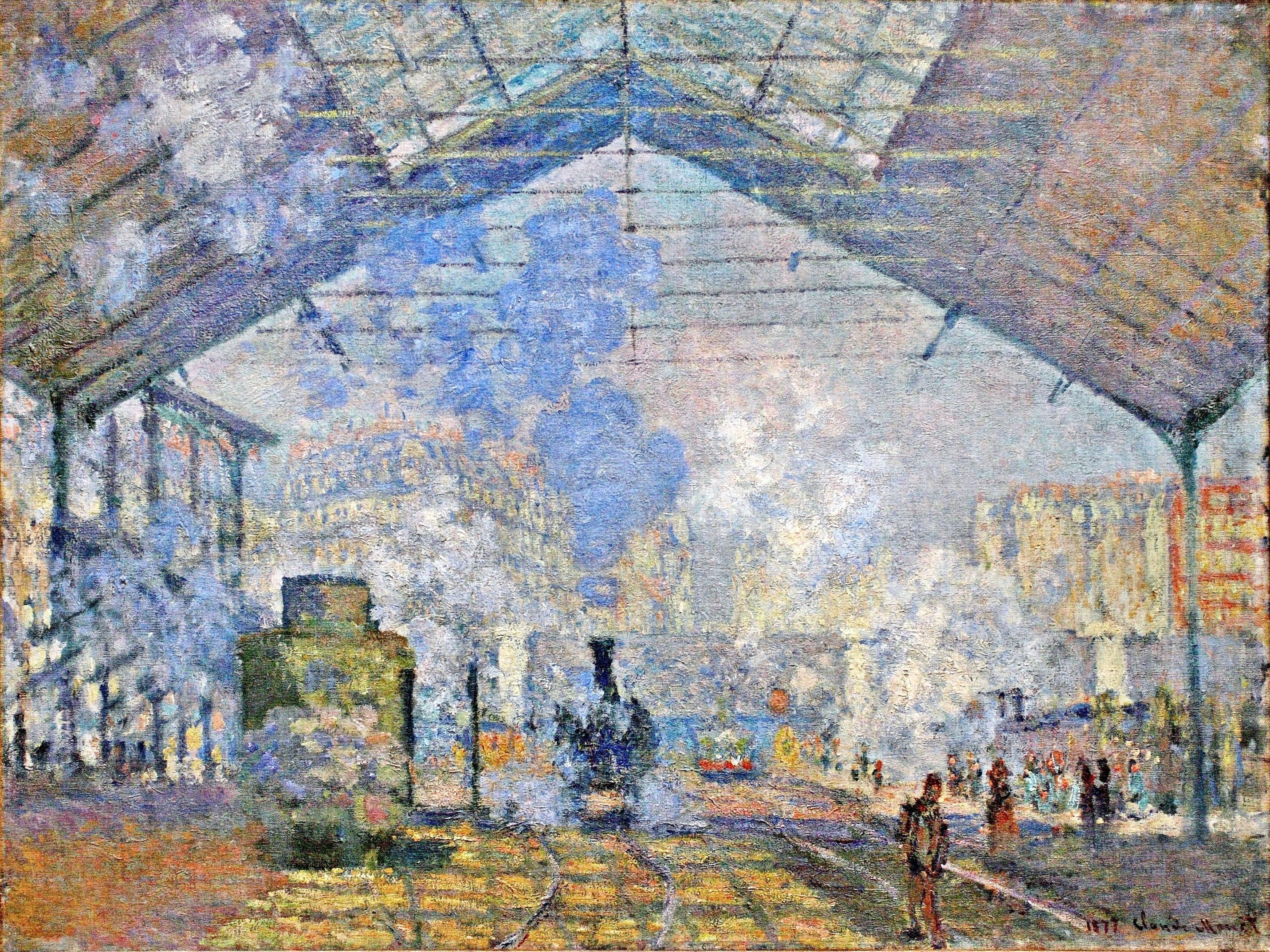Claude Monet - Saint-Lazare Station, Sunlight Effect 1877
 |
 |
 |
 |
 |
 |
 |

Saint-Lazare Station, Sunlight Effect 1877
75x104cm oil/canvas
Musée d'Orsay, Paris, France
The image is only being used for informational and educational purposes
<< Previous G a l l e r y Next >>
From the Musée d'Orsay, Paris, France:
When he painted The Saint-Lazare Station, Monet had just left Argenteuil to settle in Paris. After several years of painting in the countryside, he turned to urban landscapes. At a time when the critics Duranty and Zola exhorted artists to paint their own times, Monet tried to diversify his sources of inspiration and longed to be considered, like Manet, Degas and Caillebotte, a painter of modern life.
In 1877, settling in the Nouvelle Athènes area, Claude Monet asked for permission to work in the Gare Saint-Lazare that marked its boundary on one side. Indeed, this was an ideal setting for someone who sought the changing effects of light, movement, clouds of steam and a radically modern motif. From there followed a series of paintings with different viewpoints including views of the vast hall. In spite of the apparent geometry of the metallic frame, what prevails here is really the effects of colour and light rather than a concern for describing machines or travellers in detail. Certain zones, true pieces of pure painting, achieve an almost abstract vision. This painting was praised by another painter of modern life, Gustave Caillebotte, whose painting was often the opposite of Monet's.